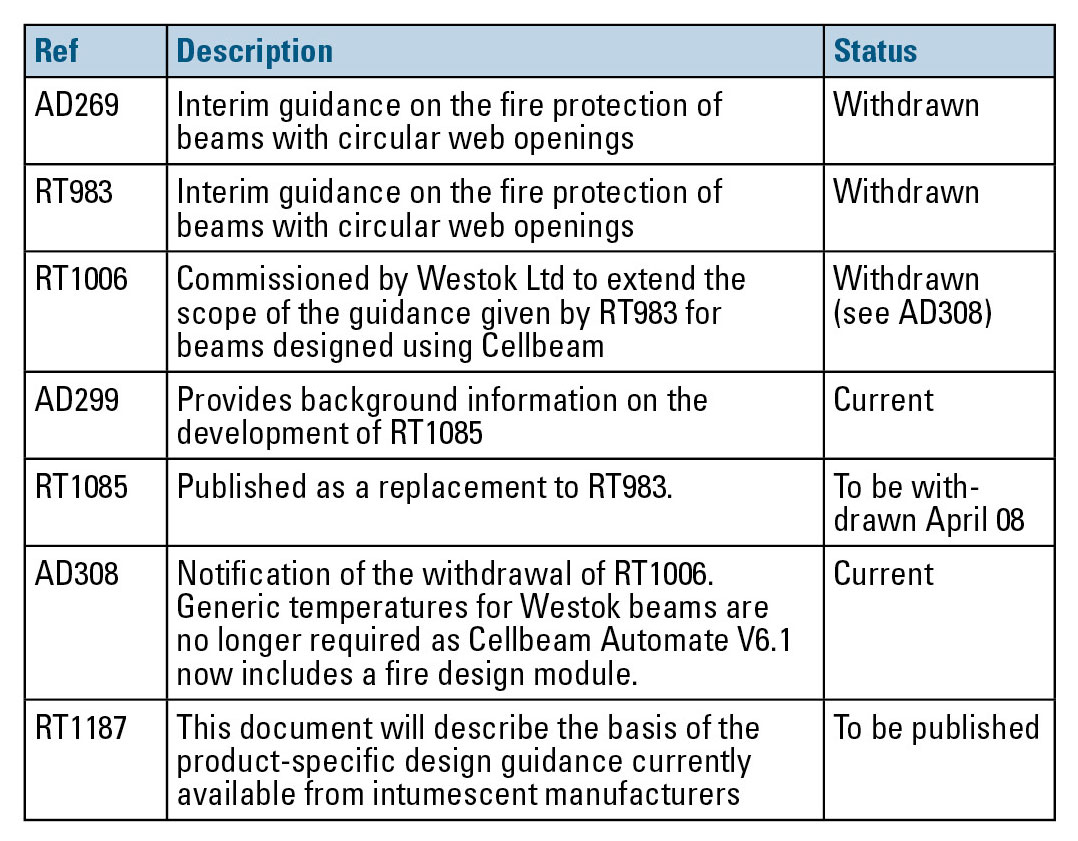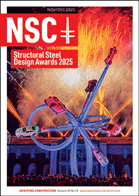Technical
AD 546: Critical temperatures for compression members in the UK NA to BS EN 1993-1-2
The UK NA to BS EN 1993-1-2 contains values for critical temperatures for compression members, presented in Table NA.1 as a matrix of values for combination of non-dimensional slenderness λ and utilisation μ0. The non-dimensional slenderness is the value at ambient temperature; the utilisation is the value in the fire limit state.
The critical temperatures assume that the relevant column buckling curve at ambient is curve ‘c’ and the imperfection factor α is therefore 0.49 (see BS EN 1993-1-1 Tables 6.1 and 6.2). This assumption is appropriate for most UC sections in S355, buckling in the minor axis, as would commonly be found in multi-storey buildings.
If the imperfection factor is less than 0.49, the critical temperatures in Table NA.1 are not conservative. Common situations where the imperfection factor is less than 0.49 include:
- UC sections in S460 (α = 0.21)
- UB sections in S355 with tf < 40mm and buckling in the minor axis (α = 0.34)
- UB sections in S460 (α = 0.21 or 0.13)
- Hot finished hollow sections in S355 (α = 0.21)
If used as columns within multi-storey buildings, an additional factor may be applied to reduce the buckling length at elevated temperatures which will have a beneficial effect (see BS EN 1993-1-2 clause 4.2.3.2(5)). The reduced buckling length is 0.7L for intermediate storeys, where L is the storey height.
If the reduced buckling length of 0.7L is used, the NA values are conservative for columns in multi-storey buildings, even when the imperfection factor is less than 0.49. However, for other members in compression, such as found in trusses and bracing, designers should note that Table NA.1 is not appropriate.
For the common cases of hot finished hollow section compression members in S355 where α = 0.21, replacement values are given in the table below.
Tables of critical temperature for other combinations of steel design grade and imperfection factor may be downloaded from Steelbiz.
The 6th Edition of the ASFP “Yellow Book” limits the utilisation μ0 to no more than 0.6 and in Table 7 (and Table B.1) recommends a critical temperature of 500°C for all compression members. This temperature of 500°C is the lowest in Table NA.1 for a utilisation of 0.6. The ASFP critical temperature of 500°C is for “Column (including hollow columns), trusses and other bracings” and “Compression members of any shape”. Because the ASFP table adopts the value from the UK NA, the same concern applies – the ASFP recommended value is not conservative if α < 0.49.
As can be seen from the replacement table when α = 0.21, a more onerous temperature of 391°C would be appropriate for hot finished hollow sections in S355.
Designers should note that the UK NA and ASFP guidance is only appropriate for UC sections buckling in their minor axis, with an imperfection factor of 0.49.
Contact: David Brown
Telephone: 01344 636555
Email: advisory@steel-sci.com





